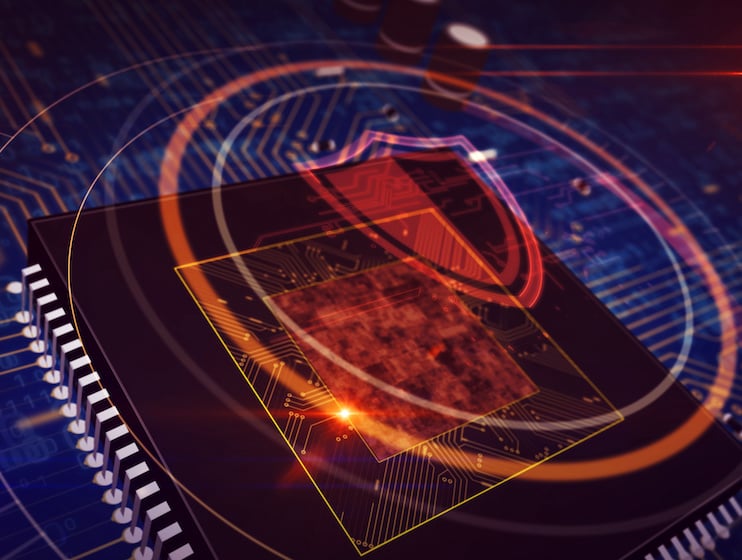What Is XDR? How It Differs from MTTD & MTTR
Cybersecurity automation has led to breakthrough solutions to mitigate the growing number of breaches and threats. One such advancement is the development of Extended Detection and Response, known as XDR, technology which provides a well-rounded approach to detecting and responding to potential attacks within your organization.
This kind of automated technology is essential in light of the exponential growth of digital crimes and scams affecting millions of people. In the 2020 Internet Crime Report, which is the latest study available, compiled by the FBI’s Internet Crime Center (IC3), nearly 800,000 cybercrime complaints were filed, with a reported $4.2 billion in losses. How can you adequately protect your enterprise from such disastrous numbers? Implementing automation technology is a foundational step to securing your network and assets.
What Is XDR?
Extended Detection and Response, abbreviated as XDR, is a comprehensive and robust development in the world of cybersecurity automation. XDR gathers and automatically analyzes data from multiple security levels, including the email, endpoint, cloud, server, or network level.
This is an important tool to leverage for your enterprise because this technology is able to prevent and detect attacks that might be planted in various components of your business, which means your internal IT team is able to more accurately—and effectively—investigate threats. Utilizing the power of cybersecurity automation means that vast amounts of information can be collected and processed in a fraction of the time that it would take for your internal IT team to manually comb through it.
Instead, by strengthening your overall cybersecurity posture with an advanced automation tool like XDR, your team is able to dedicate their time to addressing matters that necessitate human expertise and creativity. So projects that require dynamic critical thinking and out-of-the-box solutions for your clients and business goals are able to be the priority rather than tedious, repetitive tasks.
Of course, this doesn’t mean that XDR is able to function wholly on its own without any human intervention. This automation tool simply sorts out the mundane minutia so that your security team only needs to respond and address actual threats that could significantly impact your enterprise; essentially, XDR makes your internal resources more effective and efficient at keeping your assets secure.
With the capabilities of XDR, your cybersecurity team can:
- Find concealed vulnerabilities and threats
- Monitor threats across the scope of your enterprise
- Empower your internal team to work more effectively
- Enjoy an immediate return on your investment
- Address and resolve cybersecurity threats more efficiently
Overall, extended detection and response platforms enable your organization to prioritize client goals and strategic projects while keeping your information secure and protected.

How Does XDR Differ from MTTD & MTTR?
While these three acronyms might overlap in terms of Detection and Response, they’re not quite the same things.
Mean Time to Detect (MTTD) and Mean Time to Respond (MTTR) are two essential metrics to track when penetration testing your enterprise or otherwise exercising your existing detection and response tactics. These metrics measure the average time it takes for your internal processes and team to detect a threat and then how long it takes for that threat to be resolved within your organization.
Each company is different in terms of structure and bandwidth to address threats, but the reported averages are rather bleak: in 2021, the average time to detect and respond to a breach was 287 days. That means if an attacker infiltrated your network on January 1, that situation wouldn’t be resolved until October 14.
While MTTD and MTTR are metrics to monitor how nimble your company’s cybersecurity posture is, XDR is an actual automation tool to help improve your detection and response times.
3 Benefits of Cybersecurity Automation Tools
There are a whole host of benefits when it comes to implementing cybersecurity automation tools, including:
An Immediate ROI
When your in-house cybersecurity experts don’t have to spend their day reviewing countless alerts or sifting through dozens of reports generated by systems that are inherently unable to determine which information is most pressing, they’re able to dedicate their time to more important matters. Security automation tools facilitate productivity in your organization by granting peace of mind that your network and assets are protected without burdening your team to double-check if that’s true. In fact, 69% of IT professionals reported that automation would manage a fourth of their workload more effectively—that’s an instant fourth of their workday that can be dedicated to more strategic matters.
Significantly Reduced Cost of a Breach
In 2021, IBM research found that the average cost of a breach was the highest reported in almost 20 years: $4.24 million; even more financially distressing, in situations where remote workers were factored into the situation, the average cost was about $1 million more than without a remote workforce. What did this data conclude was the most effective way to mitigate the cost of a breach? Cybersecurity automation and AI tools—when fully deployed, these resources helped save an average of $3.81 million in comparison with organizations without automation.
High-Level Threats Distinguished from Low-Level Alerts
A recent study revealed that almost 74% of IT professionals are forced to ignore security events because they’re overwhelmed by the sheer volume of notifications that don’t differentiate what needs their attention versus what is a routine alert. This is an obvious concern because it means there’s a high chance that important alerts are being drowned out by the number of mundane notifications, which in turn has the potential to delay any real work being done to resolve the security event. With cybersecurity automation in place to distinguish high-level threats from routine notifications, your internal IT team is able to focus their efforts more accurately and effectively on real-time events rather than sorting through a mass of low-level alerts.
-jpg.jpeg)
Partner with Compuquip to Manage Your Cybersecurity Automations!
If your organization’s internal IT team is stretched thin with managing an influx of alerts and monotonous tasks, then it’s time to incorporate cybersecurity automation. Partner with Compuquip to manage these important—yet tedious—aspects of your network and asset security plan. We’re an extension of your team and want to ensure that your company is protected against the barrage of threats and attacks.
Contact us today to learn more about our automation solutions and enjoy an immediate ROI when they’re implemented!

